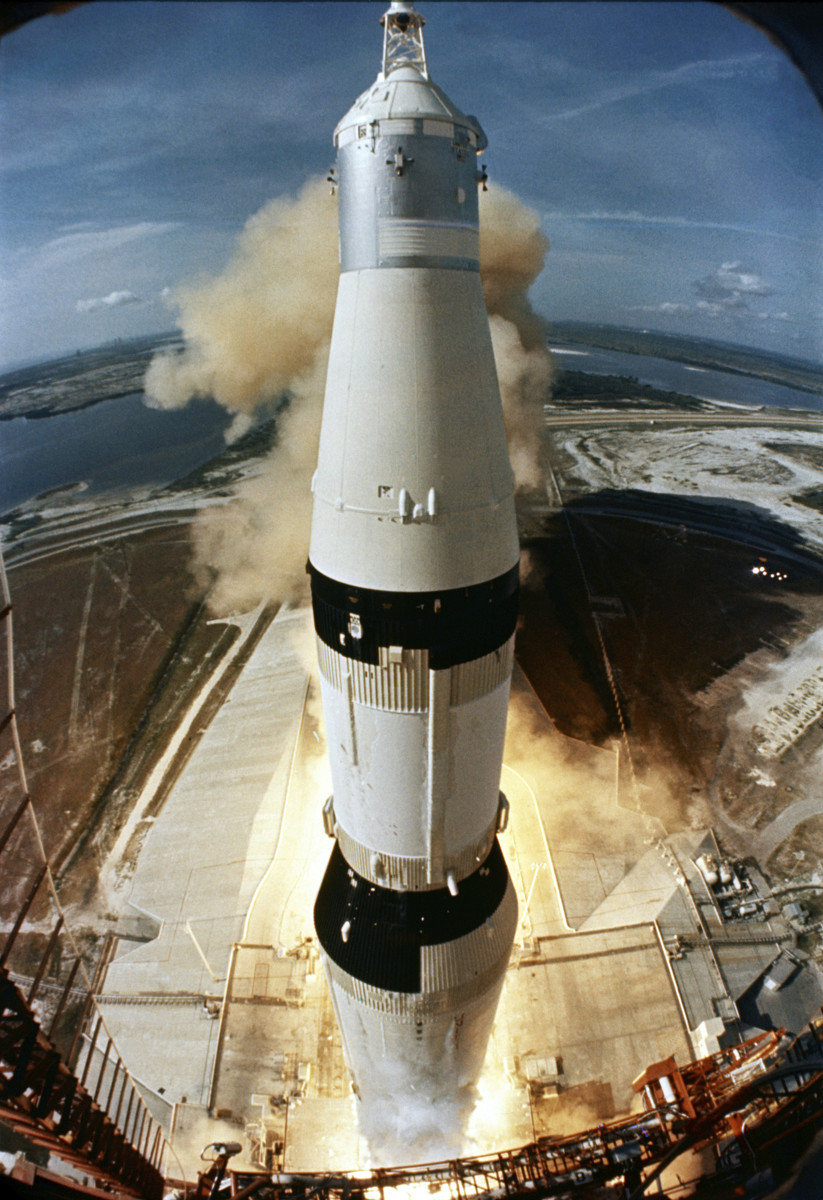
In this July 16, 1969 photo made available by NASA, the 363-feet Saturn V rocket carrying the Apollo 11 crew, launches from Pad A, Launch Complex 39, at the Kennedy Space Center in Florida. (NASA via AP)
CAPE CANAVERAL, Fla. (AP) - Apollo 11 astronaut Michael Collins returned Tuesday to the exact spot where he flew to the moon 50 years ago with Neil Armstrong and Buzz Aldrin.
Collins had the spotlight to himself this time - Armstrong has been gone for seven years and Aldrin canceled. Collins said he wished his two moonwalking colleagues could have shared the moment at Kennedy Space Center's Launch Complex 39A, the departure point for humanity's first moon landing.
"Wonderful feeling to be back," the 88-year-old command module pilot said on NASA TV. "There's a difference this time. I want to turn and ask Neil a question and maybe tell Buzz Aldrin something, and of course, I'm here by myself."
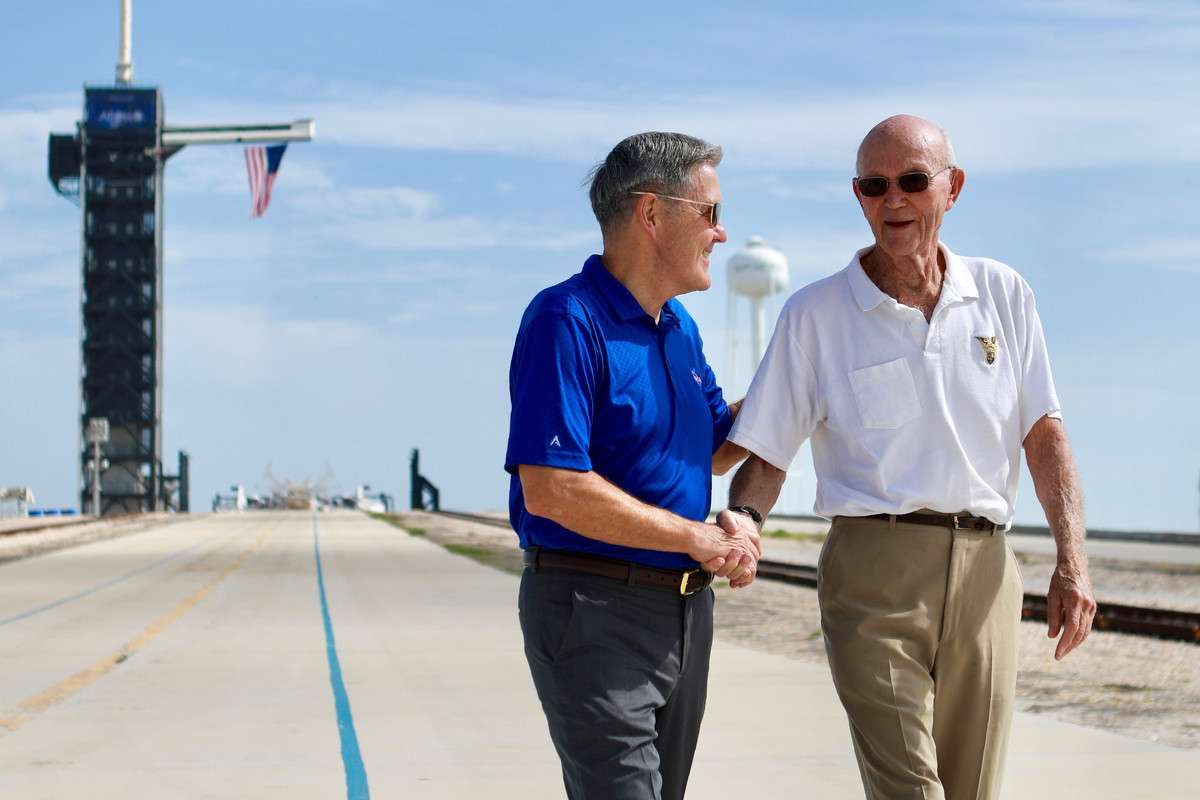
In this Tuesday, July 16, 2019 photo made available by NASA, astronaut Michael Collins, right, speaks to Kennedy Space Center Director Bob Cabana at Launch Complex 39A, about the moments leading up to launch at 9:32 a.m. on July 16, 1969, and what it was like to be part of the first mission to land on the moon. Collins was orbiting in the Command Module, while Neil Armstrong and Buzz Aldrin went to the surface in the Lunar Module. (Frank Michaux/NASA via AP)
At NASA's invitation, Collins marked the precise moment - 9:32 a.m. on July 16, 1969 - that the Saturn V rocket blasted off. He was seated at the base of the pad alongside Kennedy's director, Robert Cabana, a former space shuttle commander.
Collins recalled the tension surrounding the crew that day.
"Apollo 11 ... was serious business. We, crew, felt the weight of the world on our shoulders. We knew that everyone would be looking at us, friend or foe, and we wanted to do the best we possibly could," he said.
Collins remained in lunar orbit, tending to Columbia, the mother ship, while Armstrong and Aldrin landed in the Eagle on July 20, 1969, and spent 2 ½ hours walking the gray, dusty lunar surface.
A reunion Tuesday at the Kennedy firing room by past and present launch controllers - and Collins' return to the pad, now leased to SpaceX - kicked off a week of celebrations marking each day of Apollo 11's eight-day voyage.

Neil Armstrong's Apollo 11 spacesuit is unveiled at the Smithsonian's National Air and Space Museum on the National Mall in Washington, Tuesday, July 16, 2019. (AP Photo/Andrew Harnik)
At the Air and Space Museum in Washington, the spacesuit that Armstrong wore went back on display in mint condition, complete with lunar dust left on the suit's knees, thighs and elbows. On hand for the unveiling were Vice President Mike Pence, NASA Administrator Jim Bridenstine and Armstrong's older son, Rick. Armstrong died in 2012.
A fundraising campaign took just five days to raise the $500,000 needed for the restoration.
Calling Armstrong a hero, Pence said "the American people express their gratitude by preserving this symbol of courage."
In Huntsville, Alabama, where the Saturn V was developed, thousands of model rockets were launched simultaneously, commemorating the moment the Apollo 11 crew blasted off for the moon. Hundreds of youngsters attending Space Camp counted down ... "5, 4, 3, 2, 1!" - and cheered as the rockets created a gray cloud, at least for a few moments, in the sky.

People cheer at the moment of lift-off during the Apollo 11 Launch Flashback, broadcast by CBS at the Kennedy Space Center's Apollo/Saturn V exhibit, Tuesday July 16, 2019. Guests viewed a rebroadcast of the 1969 launch from the grandstands at the Banana Creek viewing area to commemorate the launch of the Saturn V rocket and the Apollo 11 crew 50 years ago. (Joe Burbank/Orlando Sentinel via AP)
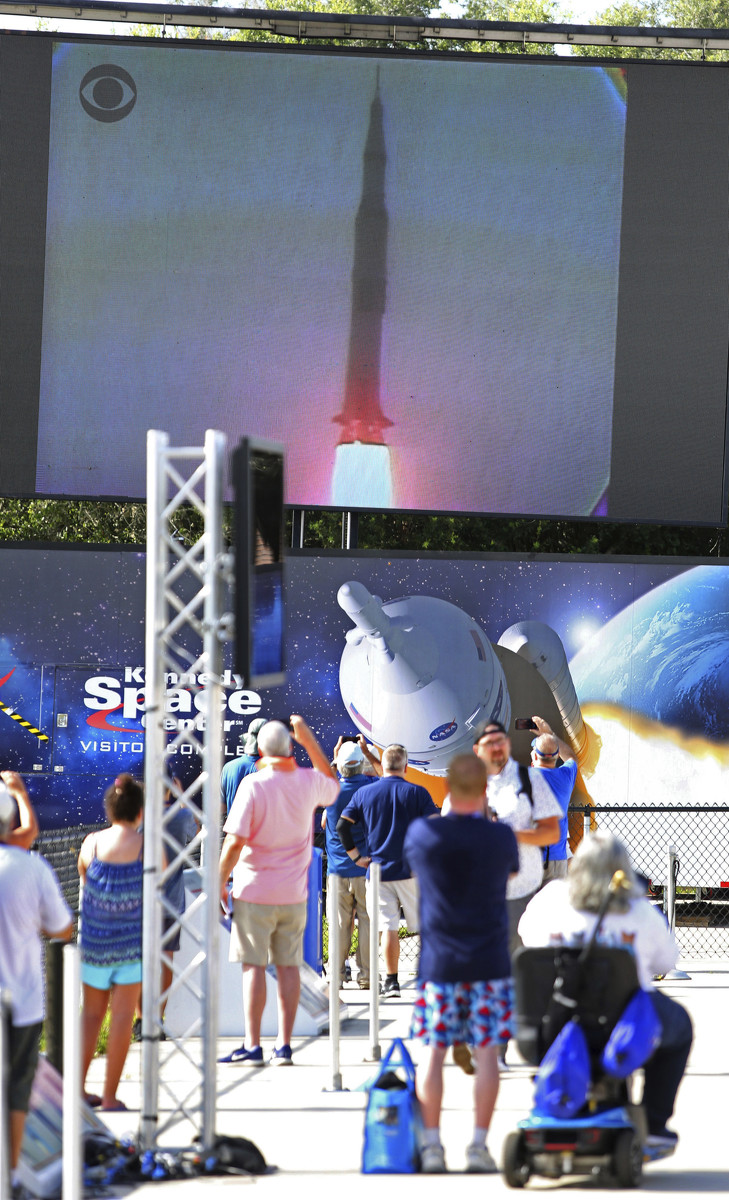
People watch lift-off during the Apollo 11 Launch Flashback, broadcast by CBS at the Kennedy Space Center's Apollo/Saturn V exhibit, Tuesday July 16, 2019. Guests viewed a rebroadcast of the 1969 launch from the grandstands at the Banana Creek viewing area to commemorate the launch of the Saturn V rocket and the Apollo 11 crew 50 years ago. (Joe Burbank/Orlando Sentinel via AP)
Back at Kennedy, NASA televised original launch video of Apollo 11, timed down to the second. Then Cabana turned the conversation to NASA's next moonshot program, Artemis, named after the twin sister of Greek mythology's Apollo. It seeks to put the first woman and next man on the lunar surface - the moon's south pole - by 2024. President John F. Kennedy's challenge to put a man on the moon by the end of 1969 took eight years to achieve.
Collins said he likes the name Artemis and, even more, likes the concept behind Artemis.
"But I don't want to go back to the moon," Collins told Cabana. "I want to go direct to Mars. I call it the JFK Mars Express."
Collins noted that the moon-first crowd has merit to its argument and he pointed out Armstrong himself was among those who believed returning to the moon "would assist us mightily in our attempt to go to Mars."
Cabana assured Collins, "We believe the faster we get to the moon, the faster we get to Mars as we develop those systems that we need to make that happen."
About 100 of the original 500 launch controllers and managers on July 16, 1969, reunited in the firing room Tuesday morning. The crowd also included members of NASA's next moon management team, including Charlie Blackwell-Thompson, launch director for the still-in-development Space Launch System moon rocket. The SLS will surpass the Saturn V, the world's most powerful rocket to fly to date.
Blackwell-Thompson said she got goosebumps listening to the replay of the Apollo 11 countdown. Hearing Collins' "personal account of what that was like was absolutely amazing."
The lone female launch controller for Apollo 11, JoAnn Morgan, enjoyed seeing the much updated- firing room. One thing was notably missing, though: stacks of paper. "We could have walked to the moon on the paper," Morgan said.
Collins was going to be reunited later in the day with two other Apollo astronauts at an evening gala at Kennedy, including Apollo 16 moonwalker Charlie Duke, who was the capsule communicator in Mission Control for the Apollo 11 moon landing. The U.S. Space and Rocket Center in Huntsville also had a special anniversary dinner on tap Tuesday night, with Aldrin and other retired Apollo astronauts and rocket scientists.
Only four of the 12 moonwalkers from 1969 through 1972 are still alive: Aldrin, Duke, Apollo 15's David Scott and Apollo 17's Harrison Schmitt.
NASA spokesman Bob Jacobs said Aldrin, 89, bowed out of the launch pad visit, citing his intense schedule of appearances. Aldrin hosted a gala in Southern California last Saturday and planned to head directly to the Huntsville dinner. Aldrin and Collins may reunite in Washington on Friday or Saturday, the 50th anniversary of Apollo 11's moon landing.
___
Science writer Seth Borenstein contributed from Washington.
___
The Associated Press Health and Science Department receives support from the Howard Hughes Medical Institute's Department of Science Education. The AP is solely responsible for all content.
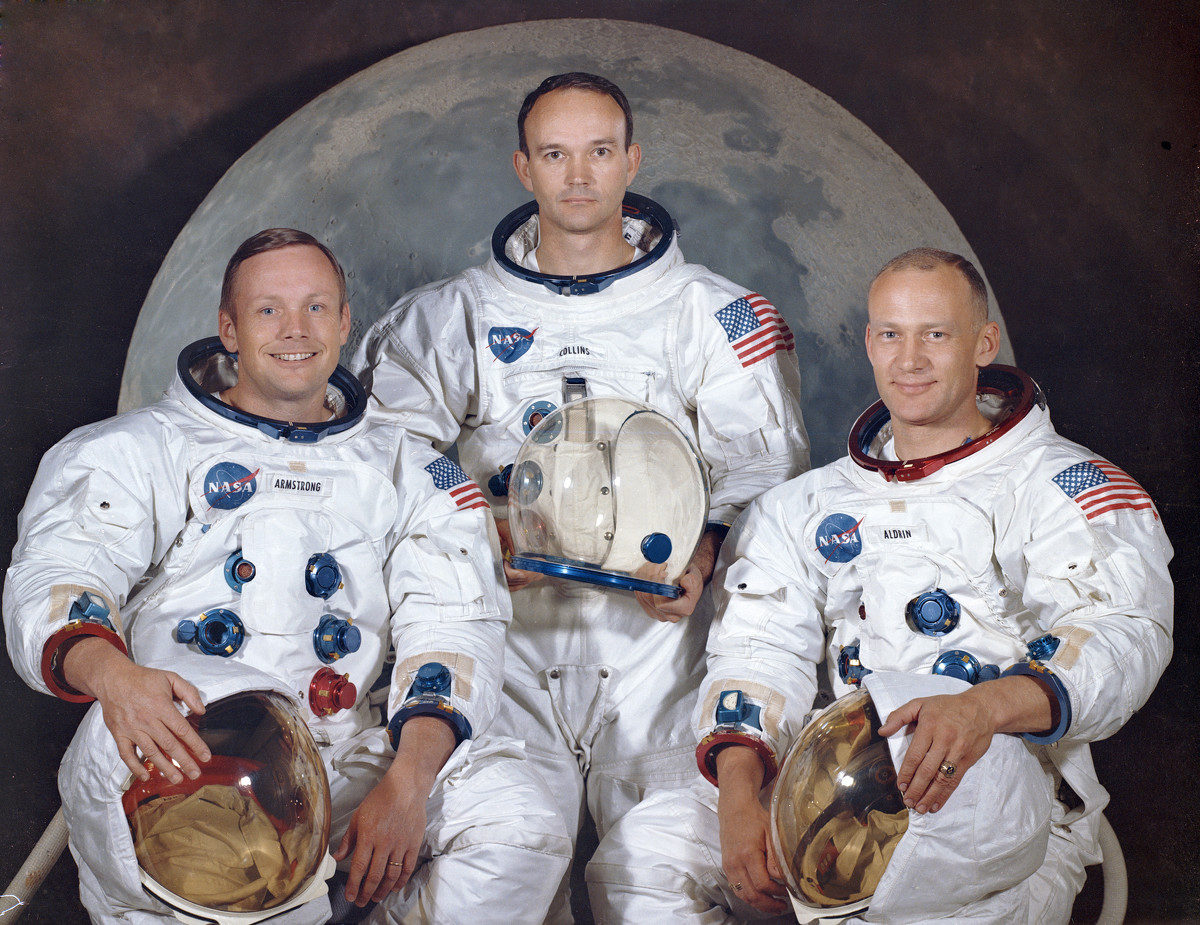
This March 30, 1969 photo made available by NASA shows the crew of the Apollo 11, from left, Neil Armstrong, commander; Michael Collins, module pilot; Edwin E. "Buzz" Aldrin, lunar module pilot. Apollo 11 was the first manned mission to the surface of the moon. (NASA via AP)

In this July 16, 1969 file photo, from right, Neil Armstrong, Michael Collins and Buzz Aldrin walk to the van that will take the crew to the launchpad at Kennedy Space Center on Merritt Island, Florida. (AP Photo/File)
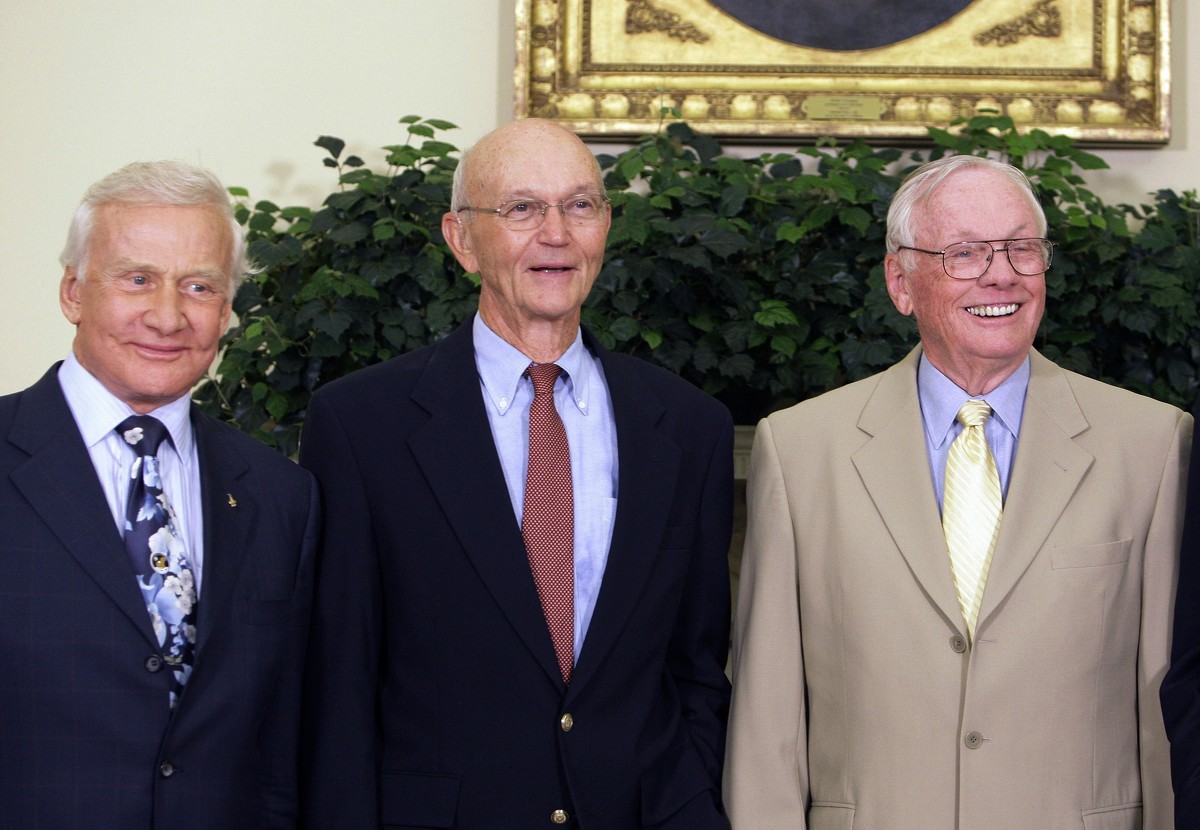
In this July 20, 2009 file photo, Apollo 11 astronauts, from left, Buzz Aldrin, Michael Collins and Neil Armstrong stand in the Oval Office at the White House in Washington, on the 40th anniversary of the mission's moon landing. (AP Photo/Alex Brandon)
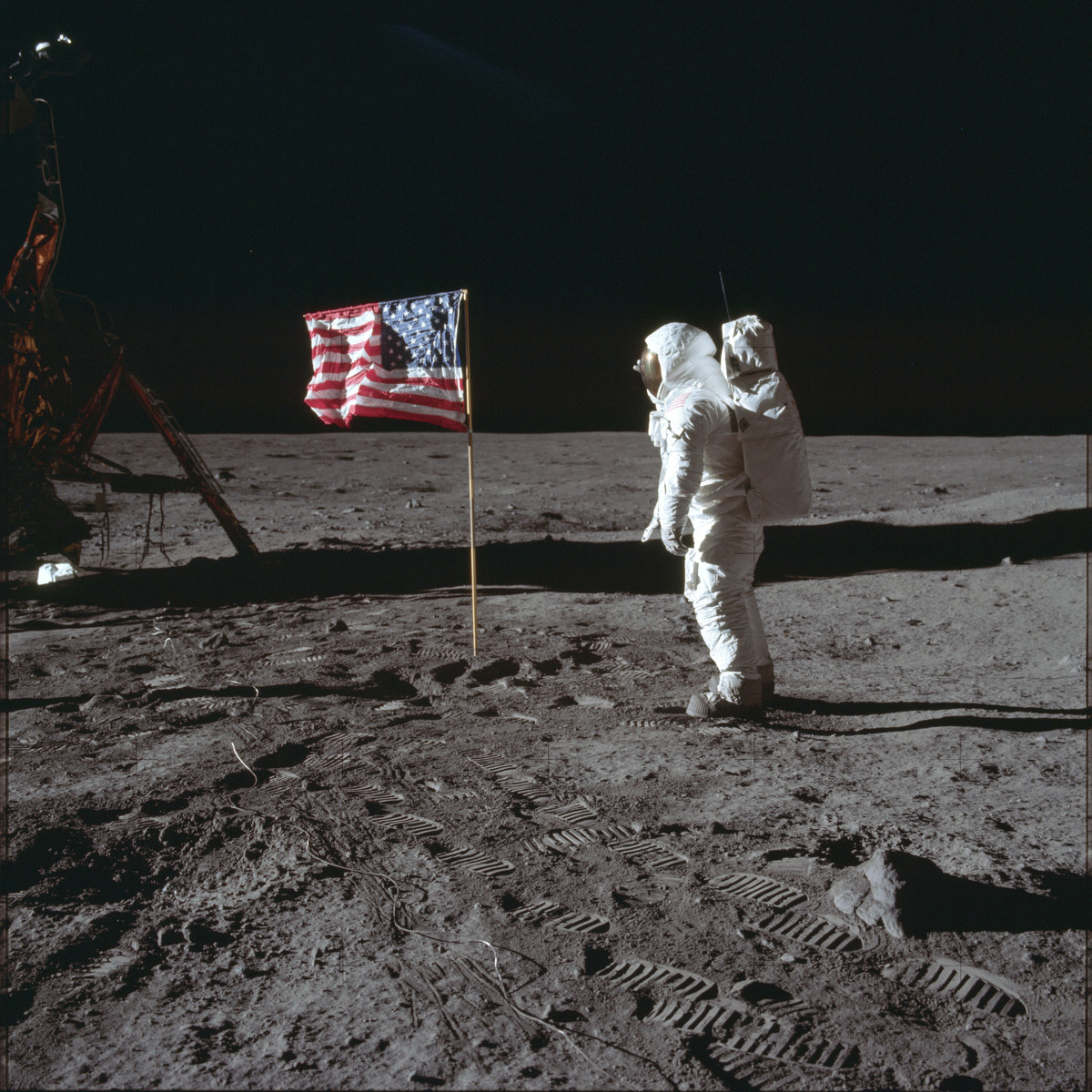
In this July 20, 1969 photo made available by NASA, astronaut Buzz Aldrin Jr. poses for a photograph beside the U.S. flag on the moon during the Apollo 11 mission. Aldrin and fellow astronaut Neil Armstrong were the first men to walk on the lunar surface with temperatures ranging from 243 degrees above to 279 degrees below zero. Astronaut Michael Collins flew the command module. (Neil Armstrong/NASA via AP)
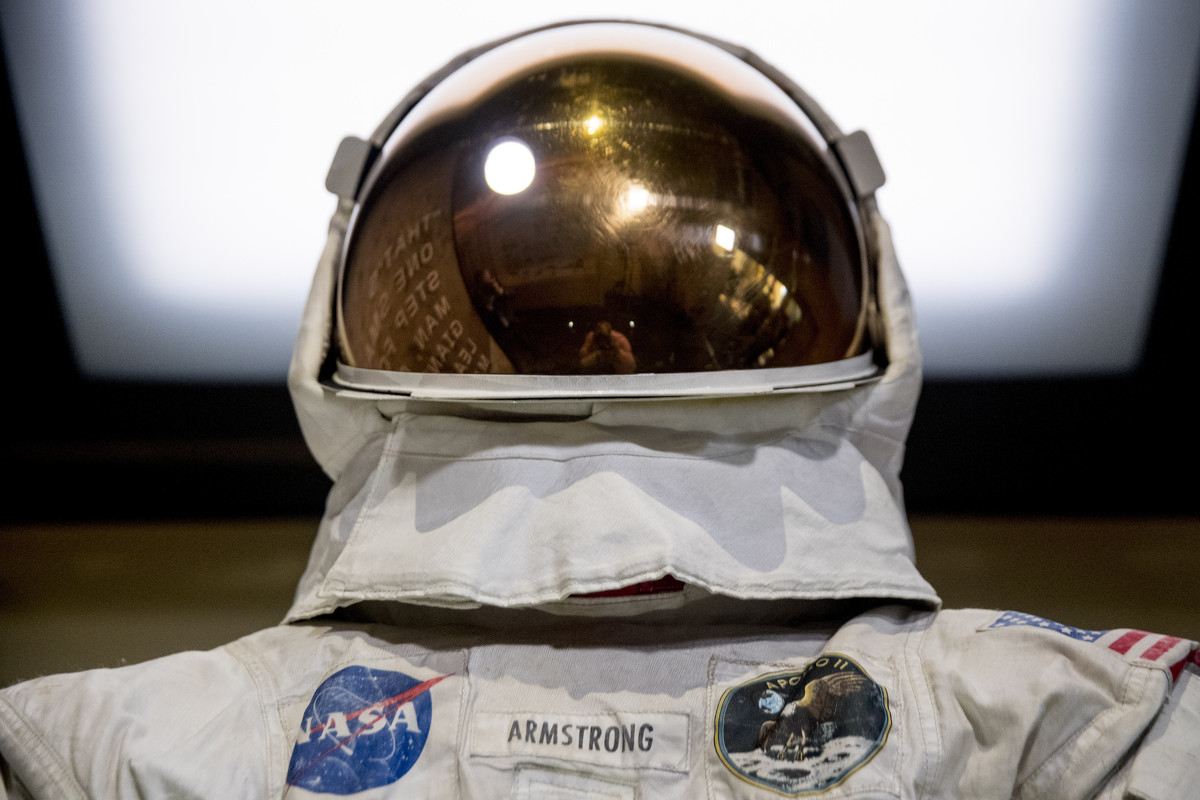
Neil Armstrong's Apollo 11 spacesuit is unveiled at the Smithsonian's National Air and Space Museum on the National Mall in Washington, Tuesday, July 16, 2019. (AP Photo/Andrew Harnik)

Rick Armstrong, the son of Neil Armstrong, left, and Vice President Mike Pence, right, shake hands after unveiling Neil Armstrong's Apollo 11 spacesuit at the Smithsonian's National Air and Space Museum on the National Mall in Washington, Tuesday, July 16, 2019. (AP Photo/Andrew Harnik, Pool)
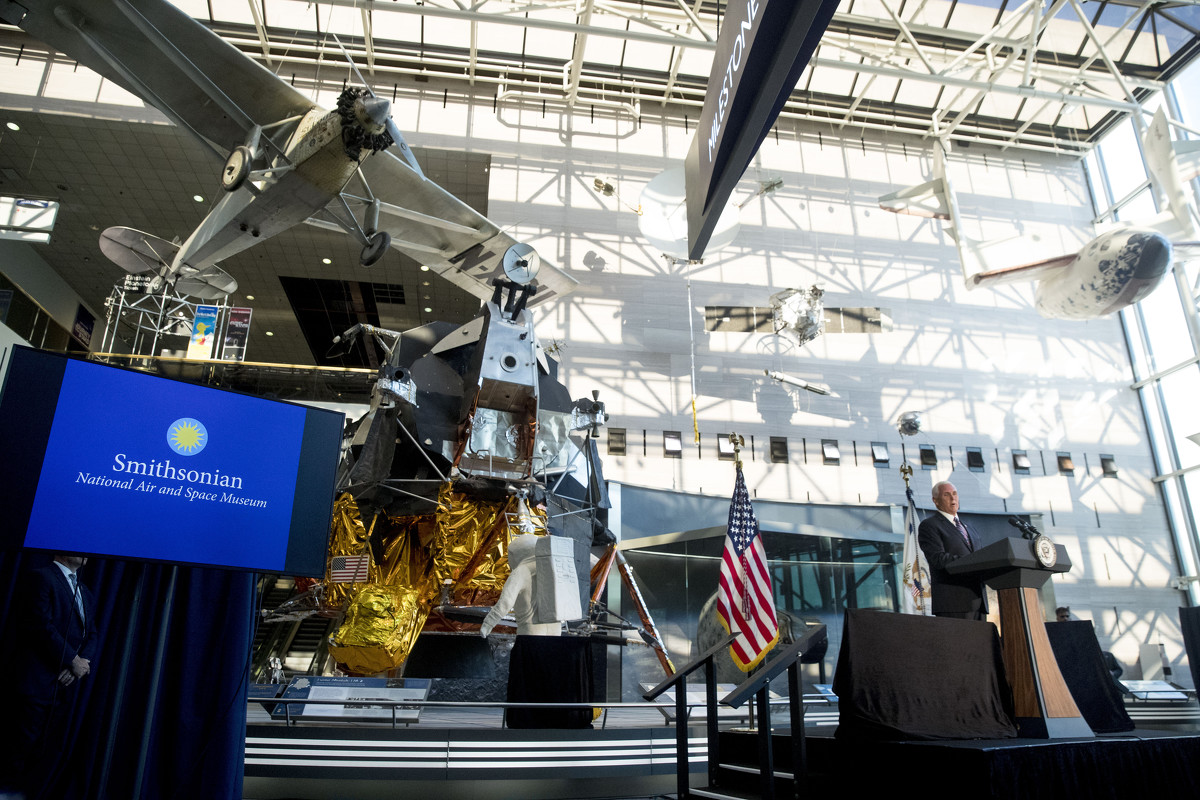
A lunar module, the same type that landed on the moon for Apollo 11, is displayed behind Vice President Mike Pence as he speaks before the unveiling of Neil Armstrong's Apollo 11 spacesuit at the Smithsonian's National Air and Space Museum on the National Mall in Washington, Tuesday, July 16, 2019. (AP Photo/Andrew Harnik)
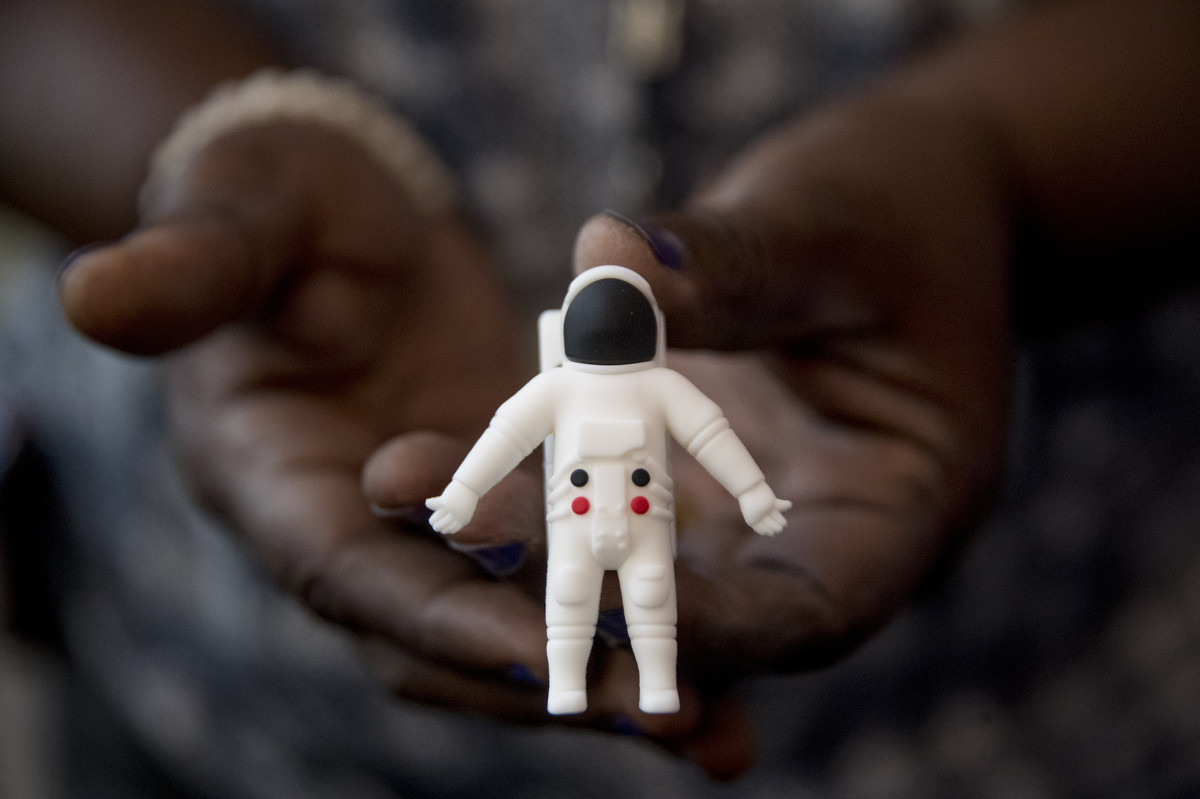
A space suit USB thumb drive is handed out to members of the media before Neil Armstrong's Apollo 11 spacesuit is unveiled at the Smithsonian's National Air and Space Museum on the National Mall in Washington, Tuesday, July 16, 2019. (AP Photo/Andrew Harnik)